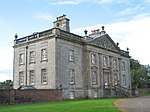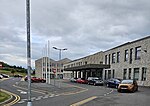Auchinleck Talbot F.C.
1909 establishments in ScotlandAssociation football clubs established in 1909AuchinleckAuchinleck Talbot F.C.Football clubs in Scotland ... and 4 more
Football in East AyrshireScottish Junior Football Association clubsUse British English from May 2013West of Scotland Football League teams
Auchinleck Talbot Football Club is a Scottish football club based in Auchinleck, East Ayrshire. They currently play in the West of Scotland League Premier Division. The club is also a member of the Scottish Junior Football Association, and have won the Scottish Junior Cup on a record 14 occasions. They compete in a local derby against near neighbours and biggest rivals Cumnock Juniors.
Excerpt from the Wikipedia article Auchinleck Talbot F.C. (License: CC BY-SA 3.0, Authors).Auchinleck Talbot F.C.
Beechwood Avenue,
Geographical coordinates (GPS) Address External links Nearby Places Show on map
Geographical coordinates (GPS)
| Latitude | Longitude |
|---|---|
| N 55.46804 ° | E -4.290322 ° |
Address
Auchinleck Talbot FC
Beechwood Avenue
KA18 2AR , Holmhead
Scotland, United Kingdom
Open on Google Maps








